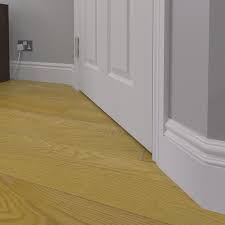Wood panelling brings timeless warmth and natural beauty to any space, but selecting the right kit requires careful consideration of materials, styles, and practical factors. This comprehensive guide walks you through everything you need to choose wood panelling that enhances your home’s aesthetic while meeting your functional needs and budget.
Understanding Wood Types and Materials
The foundation of your selection begins with choosing the right wood species and material quality:
Solid Wood Options
-
Oak: Durable with prominent grain patterns; ideal for traditional and rustic styles
-
Walnut: Rich, dark tones with straight grain; perfect for luxurious, formal spaces
-
Maple: Fine, consistent grain; takes stain evenly for modern applications
-
Pine: Affordable with noticeable knots; excellent for rustic and cottage styles
-
Cedar: Natural weather resistance with aromatic qualities; suitable for humid areas
Engineered Wood Alternatives
-
MDF with Wood Veneer: More stable than solid wood with real wood surface
-
Plywood Panels: Less prone to warping with consistent strength
-
Reclaimed Wood Composites: Eco-friendly option with character marks
Assessing Wood Quality
-
Check for moisture content (ideally 6-8% for interior use)
-
Look for consistent grain patterns and coloring
-
Ensure panels are properly milled with straight edges
-
Verify the wood has been properly dried and conditioned
Style Selection Guide
Traditional Panelling Styles
-
Raised Panel: Classic formal appearance with framed center panels
-
Beadboard: Vertical planking with distinctive grooves for cottage charm
-
Shiplap: Horizontal boards with rabbeted edges for rustic appeal
-
Board and Batten: Vertical planks with covering strips for architectural interest
Modern Wood Panelling
-
Slat Walls: Thin, precisely spaced wood strips for contemporary texture
-
Geometric Patterns: Herringbone, chevron, or custom arrangements
-
Full-height Planking: Floor-to-ceiling wood for dramatic effect
-
Mixed-width Designs: Combining different plank widths for visual interest
Room-Specific Considerations
Living Areas
-
Choose durable hardwoods like oak or maple
-
Consider acoustic properties for noise reduction
-
Lighter woods can make spaces feel larger
-
Feature walls work well behind entertainment centers
Bedrooms
-
Softer woods like pine create cozy atmospheres
-
Consider aromatic cedar for closet areas
-
Warmer tones promote relaxation
-
Headboard walls make excellent focal points
Kitchens and Bathrooms
-
Moisture-resistant woods like teak or cedar
-
Proper sealing is crucial for wet areas
-
Lighter colors show less water spotting
-
Consider wood-look alternatives for high-moisture zones
Hallways and Entryways
-
Durable species that withstand traffic
-
Lighter woods to maintain brightness
-
Vertical patterns to enhance sense of height
-
Consider pre-finished options for easy maintenance
Key Selection Factors
Budget Planning
-
Solid hardwoods: $8-20 per square foot
-
Softwoods and pine: $4-12 per square foot
-
Engineered options: $3-15 per square foot
-
Factor in additional 15-20% for waste and mistakes
-
Include costs for finishing supplies and tools
Skill Level Assessment
-
Beginner: Pre-finished, interlocking systems
-
Intermediate: Unfinished wood requiring cutting and fitting
-
Advanced: Custom patterns and complex installations
Installation Requirements
-
Tools needed: Level, saw, adhesive, nails, measuring tools
-
Wall preparation: Clean, flat surfaces work best
-
Time commitment: Most projects require 1-3 days
-
Help needed: Larger projects may require assistance
Quality Evaluation Checklist
Panel Construction
-
Straight edges and consistent thickness
-
Properly milled tongues and grooves
-
Minimal warping or bowing
-
Consistent coloring within batches
Finish Quality
-
Smooth, even sanding
-
Consistent stain application (if pre-finished)
-
Adequate protective coating
-
No bleed-through or drips
Kit Completeness
-
All necessary components included
-
Clear installation instructions
-
Recommended adhesive/fasteners
-
Contact information for support
Practical Considerations
Maintenance Requirements
-
Solid wood may need occasional refinishing
-
Pre-finished options offer easier maintenance
-
Consider ease of cleaning and durability
-
Factor long-term upkeep into your decision
Environmental Impact
-
Look for FSC-certified sustainable wood
-
Consider reclaimed or recycled options
-
Research manufacturer sustainability practices
-
Evaluate VOC levels in finishes
Climate Considerations
-
Wood expands and contracts with humidity changes
-
Consider your home’s humidity levels
-
Proper acclimation time is crucial
-
Expansion gaps must be incorporated
Implementation Strategy
Start with Samples
Always order wood samples before purchasing:
-
View in your home’s lighting conditions
-
Test finishes and stains if applicable
-
Check quality of machining and edges
-
Feel the weight and texture
Plan Your Layout
-
Measure walls accurately
-
Account for doors, windows, and outlets
-
Plan pattern direction and flow
-
Consider how panels will meet at corners
Preparation Steps
-
Allow wood to acclimate to room conditions
-
Prepare necessary tools and workspace
-
Plan for waste disposal
-
Schedule adequate time for completion
Professional Consultation Points
Consider expert advice for:
-
Historic home preservation
-
Complex architectural features
-
Structural modifications
-
High-value installation projects
Choosing the perfect wood panelling kits involves balancing aesthetic preferences with practical considerations. By understanding wood types, assessing quality, and honestly evaluating your installation capabilities, you can select panelling that brings lasting beauty and value to your home. Remember that the best wood panelling enhances your space while reflecting your personal style—creating warm, inviting interiors that stand the test of time. Take time with your selection process, and you’ll be rewarded with stunning results that make your house feel more like home.






